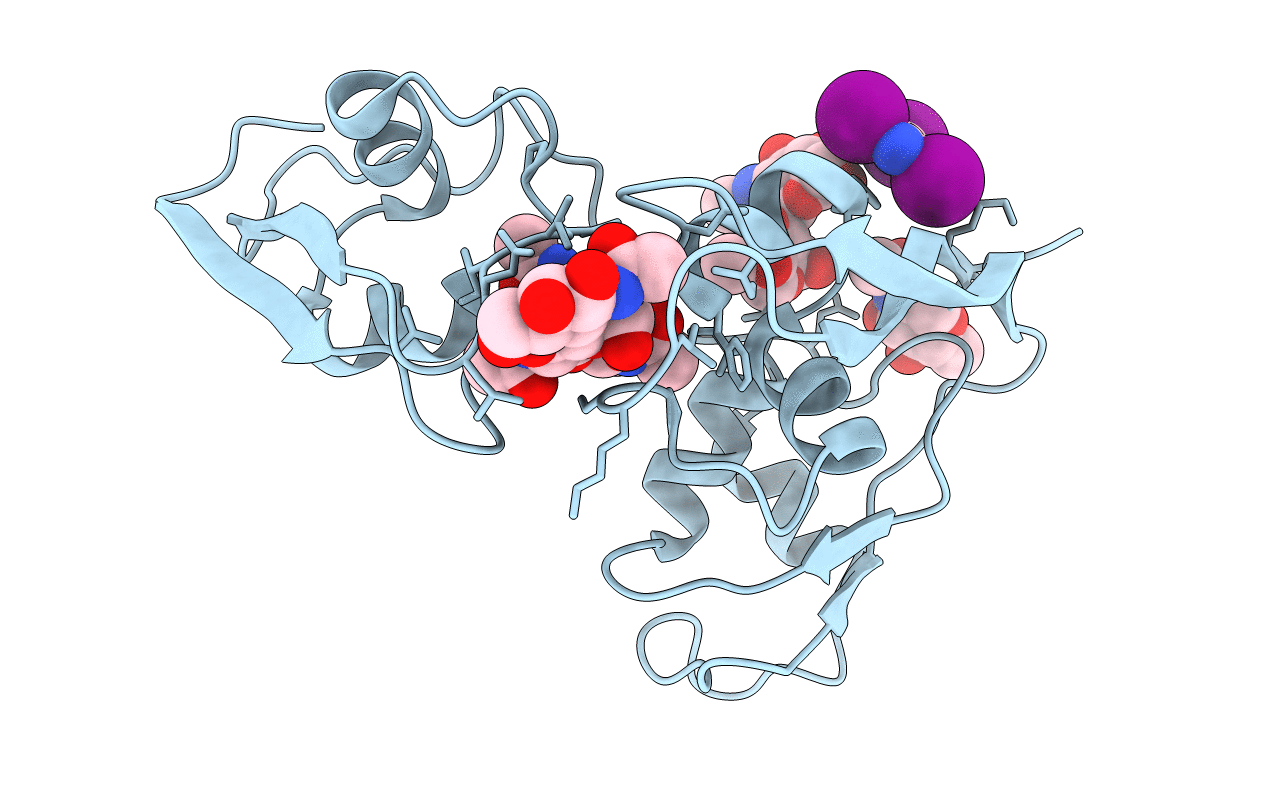
Deposition Date
2012-09-04
Release Date
2013-07-17
Last Version Date
2024-11-06
Entry Detail
PDB ID:
4B9H
Keywords:
Title:
Cladosporium fulvum LysM effector Ecp6 in complex with a beta-1,4- linked N-acetyl-D-glucosamine tetramer: I3C heavy atom derivative
Biological Source:
Source Organism:
PASSALORA FULVA (Taxon ID: 5499)
Host Organism:
Method Details:
Experimental Method:
Resolution:
2.10 Å
R-Value Free:
0.26
R-Value Work:
0.21
R-Value Observed:
0.21
Space Group:
P 32 2 1


